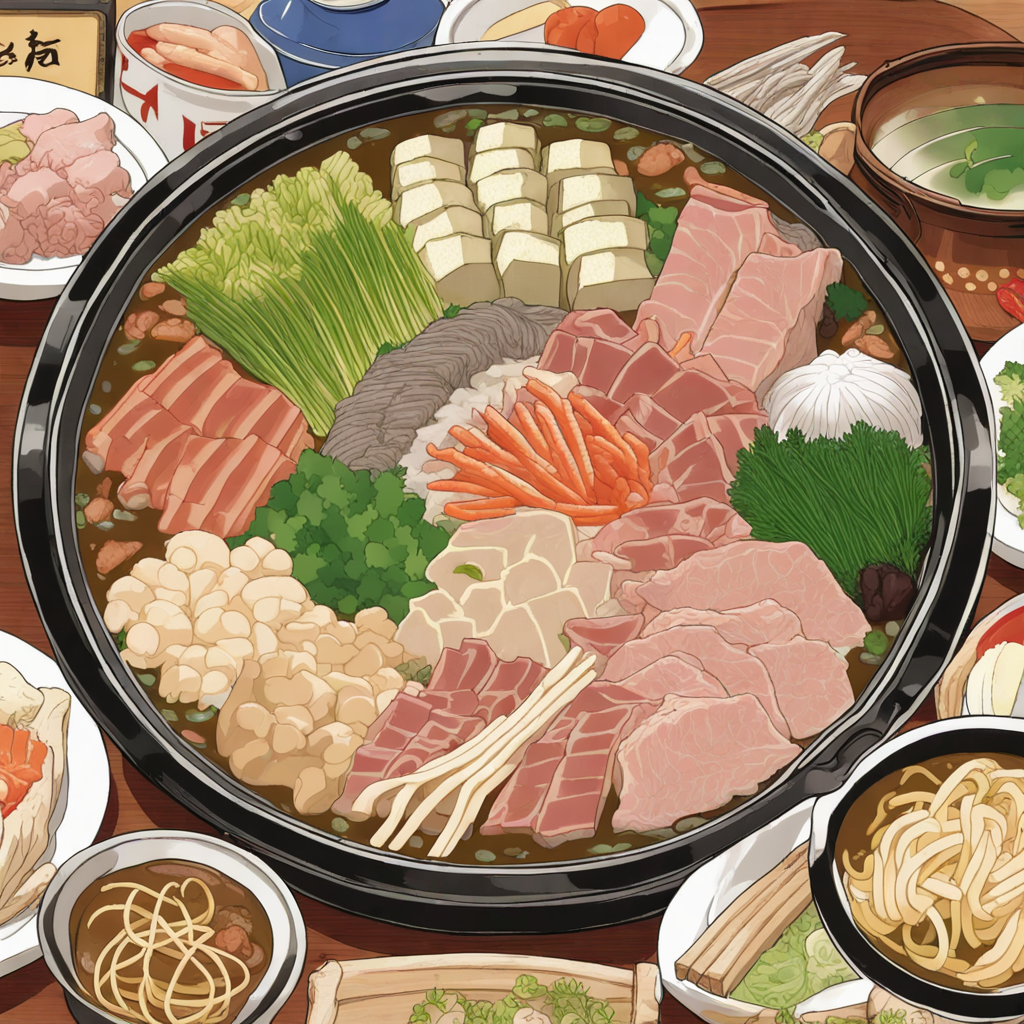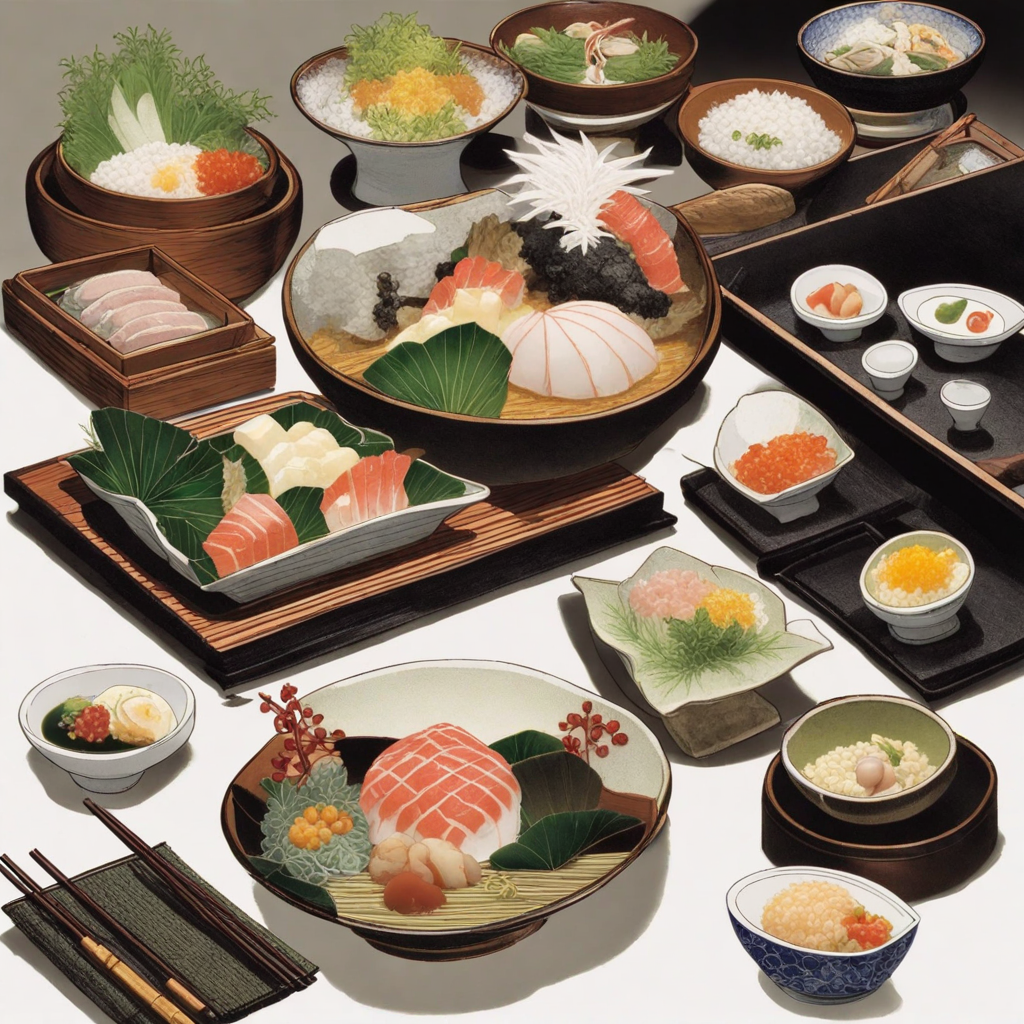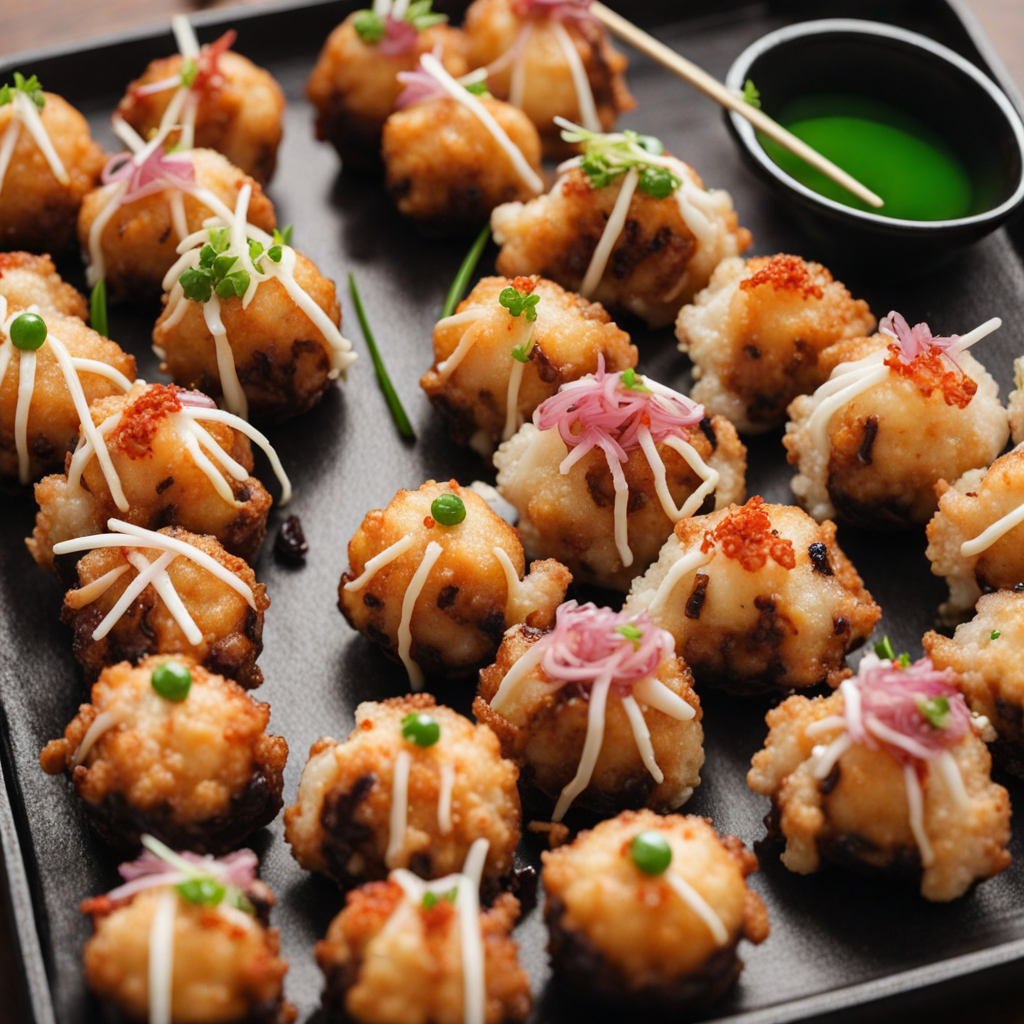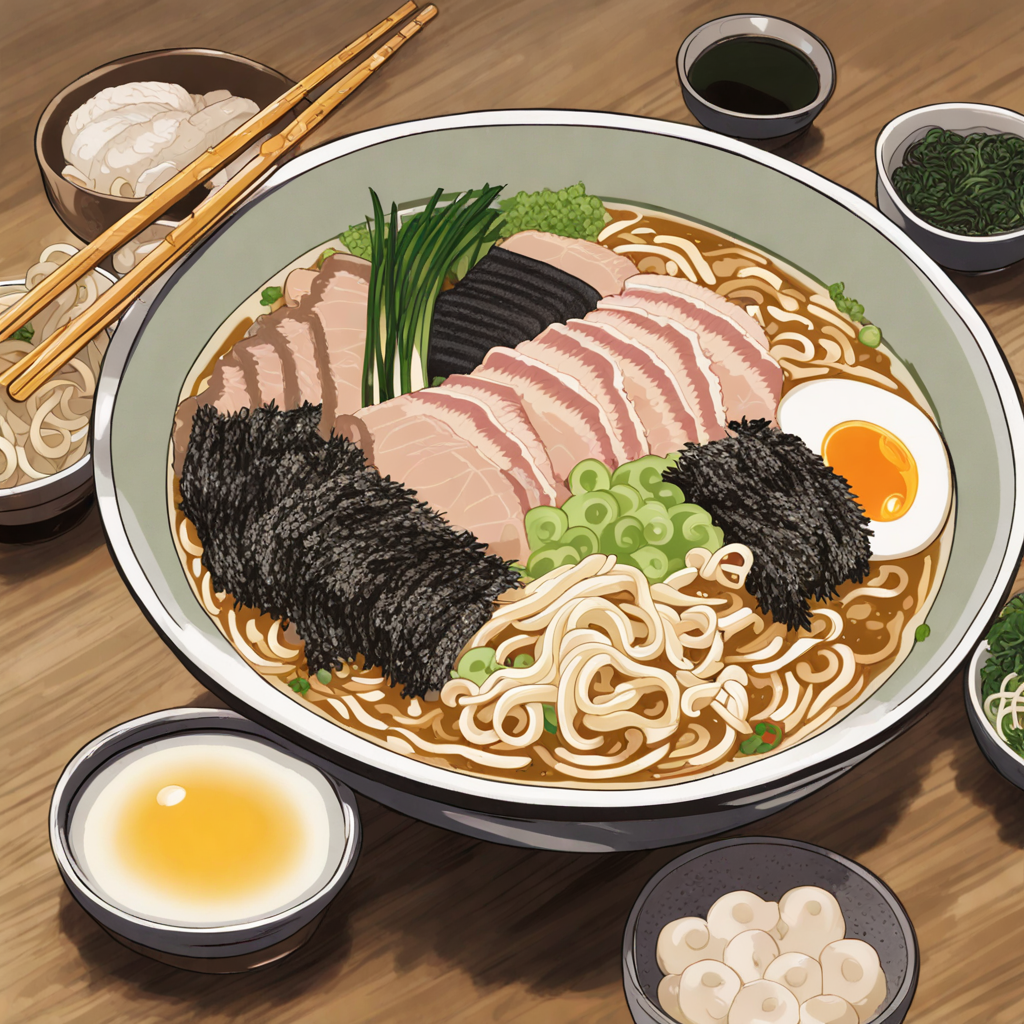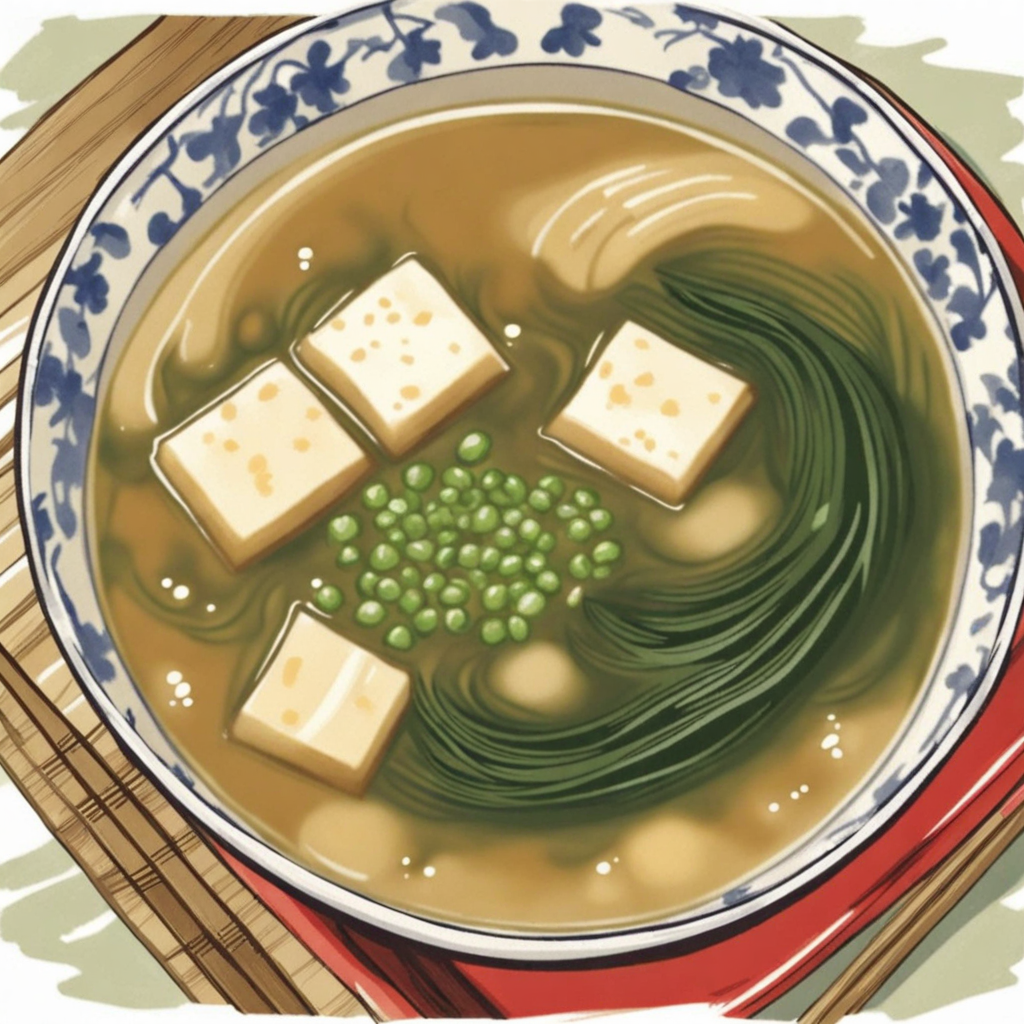Chanko Nabe
ちゃんこ鍋, or Chanko Nabe, is a traditional Japanese hot pot dish that holds a special place in the hearts and stomachs of many, particularly in the context of sumo wrestling. Originating from the lifestyle of sumo wrestlers, Chanko Nabe was designed to provide the high-calorie intake necessary for these athletes to gain weight and build muscle. The dish is characterized by its hearty nature and the variety of ingredients it incorporates, reflecting the communal spirit of Japanese dining. Historically, Chanko Nabe began to take shape in the mid-19th century when sumo wrestlers started to live together in training stables, known as "beya." The dish was initially created as a way to feed large groups of wrestlers quickly and affordably. Over time, it evolved into a symbol of the sumo culture, with each stable often boasting its own unique recipe. While the dish was once a simple stew of meat and vegetables, it has since diversified, with numerous regional variations emerging that highlight local ingredients and preferences. The flavor profile of Chanko Nabe is robust and savory, typically achieved through a rich broth that can be made from a variety of bases including dashi (a traditional Japanese stock), miso, or soy sauce. This umami-rich foundation is complemented by a medley of proteins, vegetables, and sometimes noodles, making it a well-rounded meal. The communal aspect of the dish is emphasized by the act of simmering the ingredients together
How It Became This Dish
Origin of ちゃんこ鍋 The history of ちゃんこ鍋 (Chanko Nabe) can be traced back to the Edo period (1603-1868) in Japan, a time when sumo wrestling began to formalize as a sport. While the exact origins of Chanko Nabe are somewhat murky, it is believed to have been a dish specifically created to nourish and sustain rikishi (sumo wrestlers) as they trained rigorously. The dish was developed in the sumo stables, where numerous wrestlers would live and eat together. The communal aspect of the meal not only fostered camaraderie among the wrestlers but also ensured they received the necessary nutrition to support their physically demanding lifestyle. Traditionally, Chanko Nabe is a hearty stew that features a variety of ingredients, including meat (often chicken or fish), vegetables, tofu, and noodles. The preparation methods and ingredients vary widely, reflecting the regional preferences and the personal tastes of each sumo stable’s oyakata (stable master). As such, Chanko Nabe is a dish rich in diversity, with each sumo stable claiming its unique recipe. \n\n Cultural Significance The cultural significance of Chanko Nabe extends beyond its role as a sustenance provider for wrestlers. It embodies the spirit of community and sharing inherent in sumo culture. The act of eating Chanko Nabe is often a social event, where wrestlers gather around a large pot, sharing stories and experiences as they enjoy the meal together. This practice reinforces the bonds between wrestlers, fostering teamwork and mutual support both inside and outside the ring. Furthermore, Chanko Nabe has become a symbol of Japanese culinary culture, illustrating the importance of communal dining in traditional Japanese society. The dish is representative of the philosophy of "nourishment through togetherness," where meals are not just about sustenance but also about building relationships and community. Over the years, it has transcended its origins, becoming a popular dish enjoyed by the general public, often served in restaurants specializing in sumo cuisine. \n\n Development Over Time As sumo wrestling gained popularity throughout Japan, so did the dish associated with it. In the Meiji period (1868-1912), the popularity of Chanko Nabe began to spread beyond the walls of the sumo stables, reaching the general populace. This transition marked the beginning of Chanko Nabe as a beloved dish in Japanese homes and restaurants. During this time, various regional variations began to emerge, showcasing local ingredients and flavors, which enriched the dish's identity and culinary landscape. In the post-World War II era, Japan underwent significant cultural and economic changes. With the rise of mass media and increased interest in traditional Japanese culture, Chanko Nabe gained further exposure. It became a common sight in anime and television shows, often depicted as a hearty meal that encapsulates the essence of Japanese hospitality. This media representation contributed to its status as a comfort food, beloved by many for its warm and nourishing qualities. \n\n Modern Interpretations In recent years, Chanko Nabe has seen a resurgence in popularity, not only within Japan but also internationally. The global fascination with Japanese cuisine has led to increased interest in traditional dishes, and Chanko Nabe is no exception. Many restaurants specializing in Chanko Nabe have opened up, particularly in urban areas like Tokyo and Osaka, where diners can experience the dish in a traditional setting, often complete with the communal pot style of eating. As chefs and home cooks experiment with the dish, numerous modern interpretations have emerged. While traditional recipes remain popular, variations incorporating ingredients such as seafood, exotic vegetables, and different broths have gained traction. This evolution reflects the ongoing dialogue between tradition and innovation, allowing Chanko Nabe to remain relevant and appealing to contemporary palates while retaining its cultural roots. \n\n Chanko Nabe and Sumo Today Today, Chanko Nabe is still closely associated with the world of sumo wrestling. Many sumo stables have opened their doors to the public, allowing fans to observe training sessions and partake in Chanko Nabe meals prepared by the wrestlers themselves. This unique experience allows fans to immerse themselves in sumo culture, creating a direct connection between the sport and its culinary traditions. Moreover, Chanko Nabe has become a popular dish during the Winter months, often highlighted in seasonal menus. The warmth and heartiness of the stew provide comfort during colder weather, making it a go-to choice for many. Additionally, its healthful qualities—rich in proteins, vitamins, and minerals—have made it a favored dish among health-conscious diners seeking nutritious meals that do not compromise on flavor. \n\n Conclusion In essence, Chanko Nabe serves as a delicious representation of Japan’s rich culinary heritage while embodying the values of community and tradition. Its origins in the sumo stables have nurtured a dish that fosters bonds among individuals, transcending the mere act of eating. As Chanko Nabe continues to evolve and adapt to contemporary tastes, it remains a testament to the enduring significance of food as a cultural cornerstone in Japan, celebrating the connections forged through shared meals and experiences.
You may like
Discover local flavors from Japan


